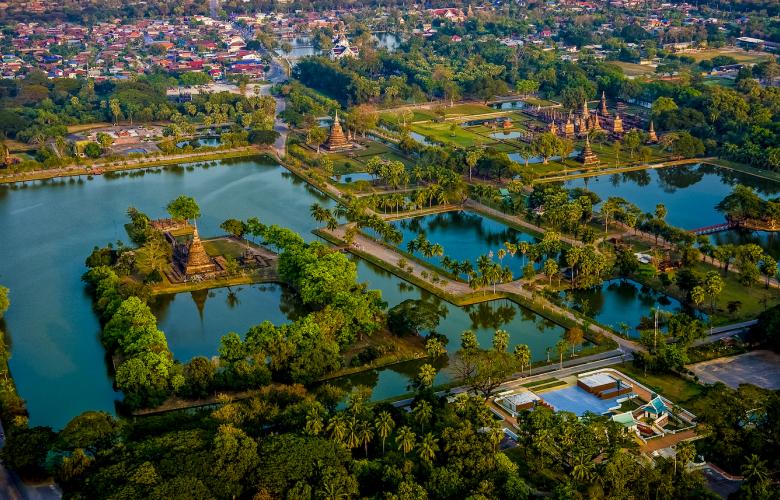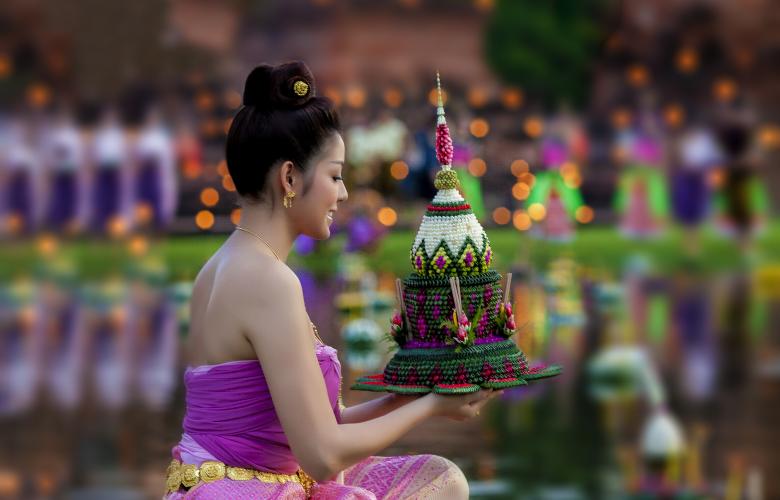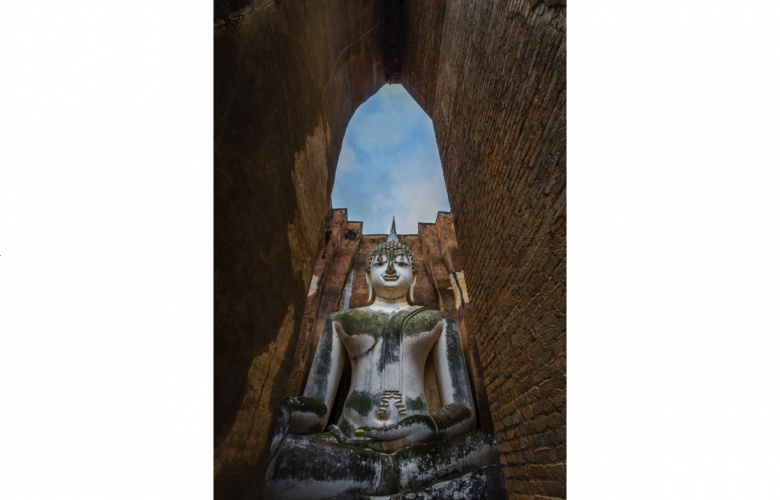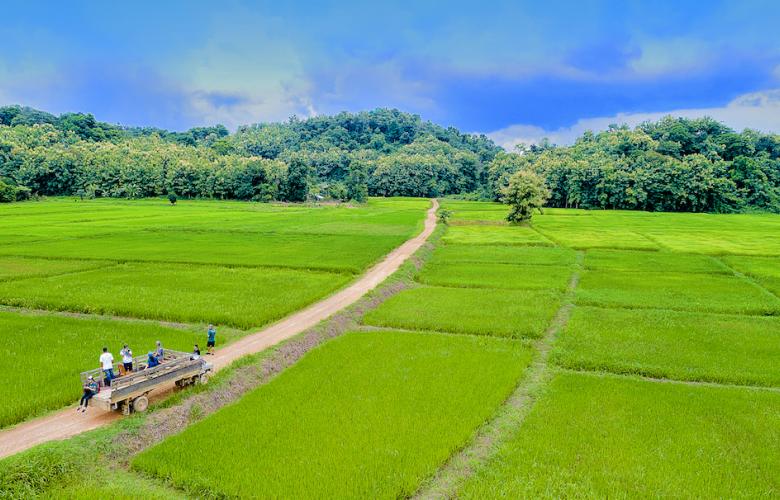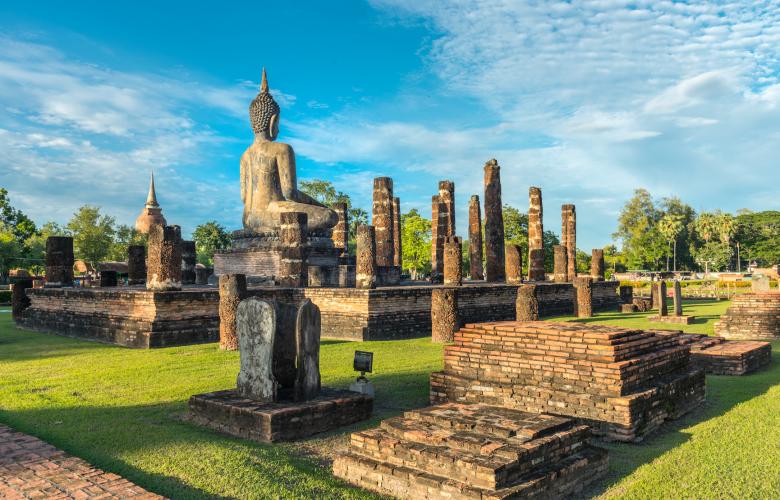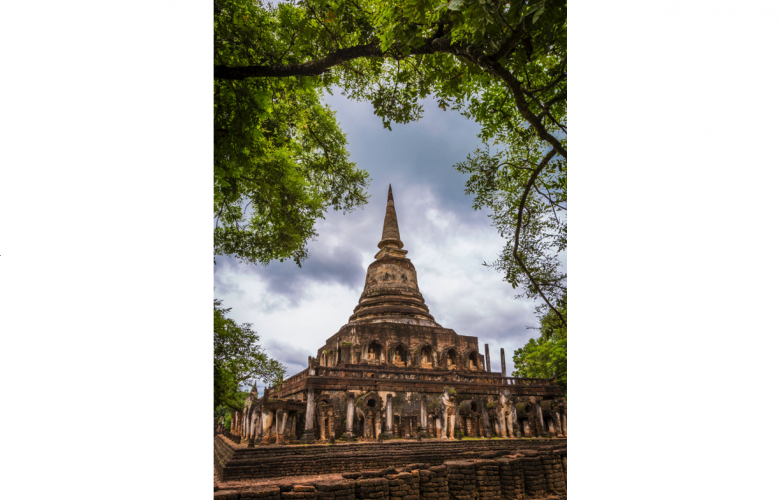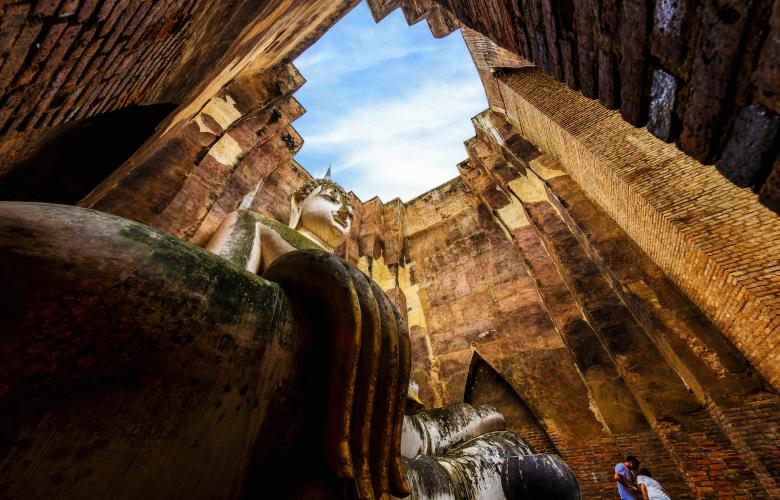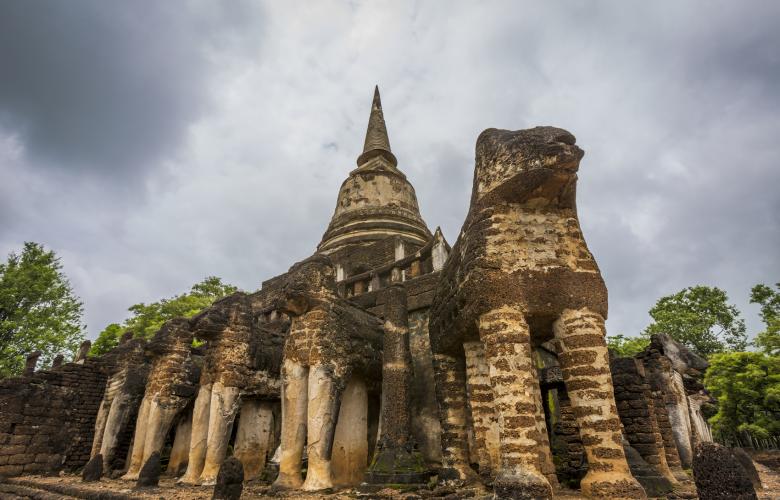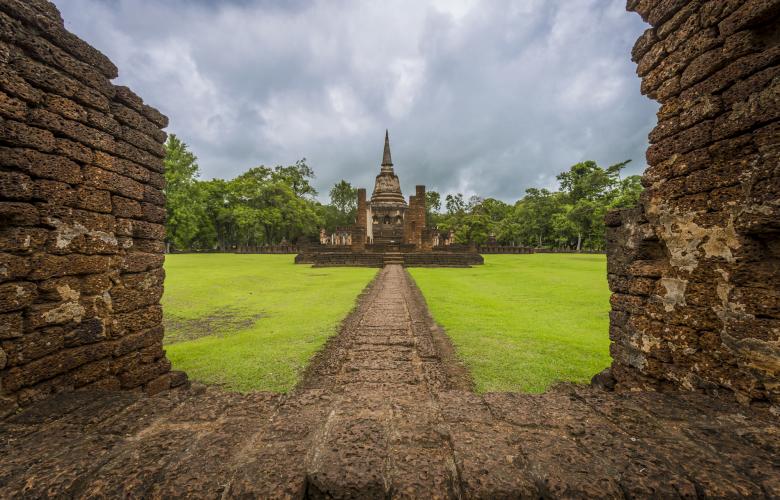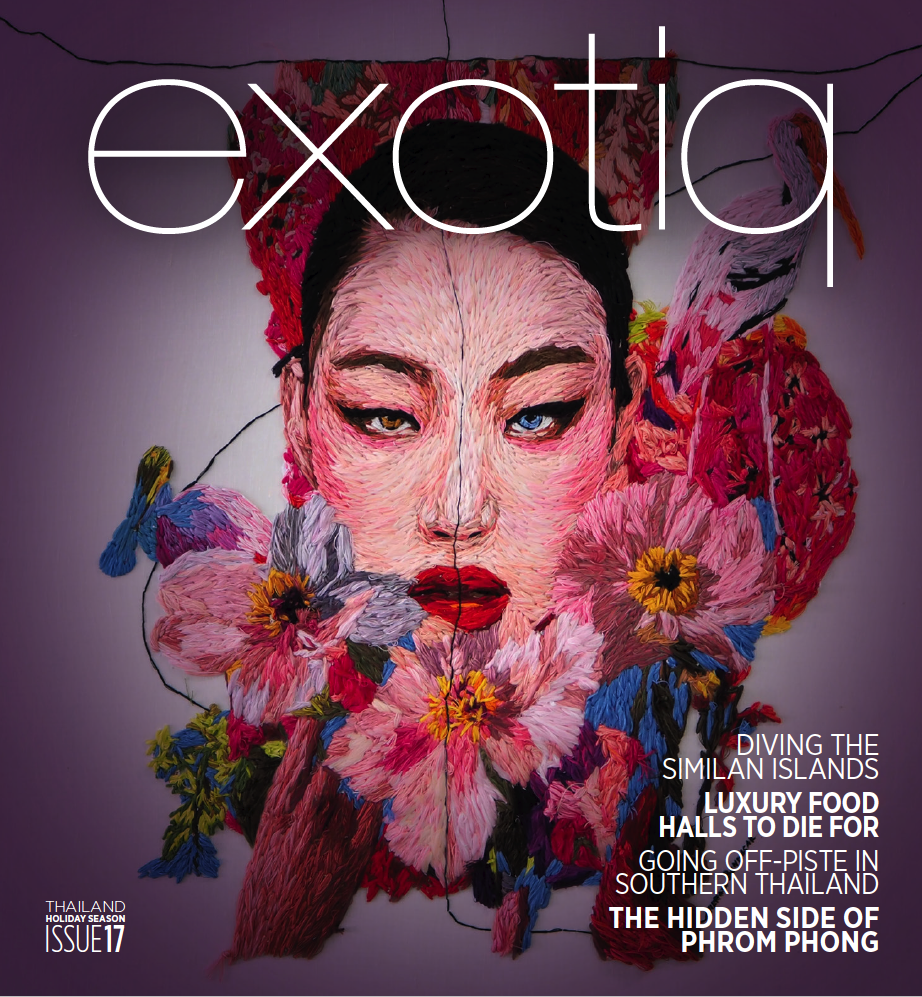- Bangkok
- Central Thailand
- Eastern Thailand
- Northeast Thailand
- Northern Thailand
- Southern Thailand
- Southern Thailand - Chumphon
- Southern Thailand - Krabi
- Southern Thailand - Phang Nga
- Southern Thailand - Phuket
- Central Island - Phuket
- Central West Coast - Phuket
- Bang Tao Beach - Phuket (Central West Coast)
- Emerald Bay - Phuket (Central West Coast)
- Kalim Beach - Phuket (Central West Coast)
- Kamala Beach - Phuket (Central West Coast)
- Laguna - Phuket (Central West Coast)
- Layan Beach - Phuket (Central West Coast)
- Patong Beach - Phuket (Central West Coast)
- Surin Beach - Phuket (Central West Coast)
- East Coast - Phuket
- North West Coast - Phuket
- Small Islands - Phuket
- South West Coast - Phuket
- Southern Coast - Phuket
- Southern Thailand - Satun
- Southern Thailand - Songkhla
- Southern Thailand - Surat Thani
Contact
Jul 23, 2019
“During the time of King Ramkhamhaeng this land of Sukhothai is thriving. There are fish in the water and rice in the fields.” – inscription in the first ancient tablets to use the Thai alphabet
Founded in the 13th century, the ancient Sukhothai kingdom is considered the cradle of Thai civilisation – the birthplace of Thai art, language and architecture. Meaning Dawn of Happiness, Sukhothai experienced a renaissance under the rule of revered King Ramkhamhaeng. Widely credited for creating the modern Thai alphabet, promoting Theravada Buddhism across the land, and strongly supporting art and culture amongst his people, King Ramkhamhaeng left an undeniable mark on Siam.
Though the golden age of Sukhothai was relatively short before being taken over by Siam’s second kingdom, Ayutthaya, its influence was unprecedented. In the mid- 1900s, restoration efforts began to preserve the ancient city centre, now a collection of palace and temple ruins, about 400 kilometres north of Bangkok.
Today, Sukhothai is still a second-tier destination after the likes of Bangkok, Phuket or Chiang Mai but still draws in travellers wishing to immerse themselves in the rich historical heritage of this charismatic ancient capital.
HISTORY & HERITAGE
sukhothai-sukhothai_historical_park-wat_mahathat_-yauy_2.jpg

Sukhothai Historical Park - Wat Mahathat
A UNESCO World Heritage Site, the Sukhothai Historical Park’s main attraction is the surprisingly condensed, central walled city. Surrounded by a moat and home to numerous temples, shrines and monuments, many of which have been carefully and continually restored, the core of the park is easy to explore on foot or bicycle. The entire park covers about 70 square kilometres with more than 190 ruins dotting the landscape.
While many ruins consist only of stone foundations set in the ground, several temples still retain more of their original structure and iconic Buddha images. The largest temple and spiritual centre of the ancient kingdom is Wat Mahathat. Modelled after a mandala and located in the centre of Sukhothai’s old city, the stunning temple typifies Sukhothai era architecture with its central lotus bud chedi (stupa), with Khmer and Lanna influences seen in the design of the temple’s smaller stupas. This fascinating melding of cultures is apparent throughout many of Sukhothai’s ruins, including Buddha images, carved reliefs and temple prangs (towers).
Just outside the northern wall of the city is Wat Si Chum, where a sizeable mandapa (or temple gathering area) houses a remarkable 15-metre-tall seated Buddha, known as Phra Achana. Within the metrethick mandapa wall is a secret passage that leads behind the head of the Buddha statue and it is believed that this was used by the Sukhothai kings during times of hardship or war to address, and encourage, their people by being the voice of Buddha. On the walls of this passage are carved slate tiles, considered Thailand’s oldest mural, featuring images from the life of Buddha.
Other distinctive sites include Wat Chang Lom, with its Singhalese-style stupas and collection of elephant sculptures, and Wat Si Sawaiwith recognised by three towering and unmistakably Khmer-style prangs, make up only a fraction of the ruins within the historical park.
In addition to the ruins and park-like surroundings, visitors can stop in at the Ramkhamhaeng National Museum located near the entrance of the park’s Central Zone. It is said that after attending the funeral of a Chinese emperor, King Ramkhamhaeng brought Chinese ceramic artisans back to Sukhothai to teach the art to his people. Incorporating local traditions into the process, Thai porcelain eventually found its own unique style known as sangkhalok dating back 700 years. Authentic sangkhalok pieces can be viewed at the Ramkhamhaeng National Museum along with an array of artefacts found during excavation digs in Sukhothai and Si Satchanalai Historical Parks, including antique Sukhothai-style Buddha carvings, which are still considered the most beautiful Buddha images in Thailand.
ANCIENT TRADITIONS, MODERN FESTIVITIES
sukhothai-wat_mahathat-loi_krathong_festival_a-aeodeg-ss_9601pa.jpg

Loi Krathong at Wat Mahathat
Colloquially known as Thailand’s lantern festival, Loi Krathong is an annual tradition celebrated throughout Thailand, involving floating small round krathong (rafts or baskets) adorned with flowers, candles, incense and wishes down the country’s waterways. Releasing krathong is meant to serve two purposes – to rid oneself of the previous year’s bad luck and to honour the water goddess with the offering.
According to Thai folklore, the festival originated in Sukhothai in the 13th century and the Sukhothai Historical Park is still considered one of the most spectacular places in the country to celebrate. On a cool November evening, the illuminated ruins, waterways and grassy lawns sparkle with candlelight making it a picturesque location for this lunar festival. Lasting five days in Sukhothai province, the city celebrates with traditional performances, light and music shows, and the releasing of paper lanterns, attracting visitors from all over the country.
STOP IN SUKHOTHAI
42304086.jpg

mapio.net
Bangkok Airways ATR at Sukhothai Airport
Sukhothai Historical Park is well worth a dedicated visit for the sheer beauty and historical value it holds in Thai culture. While more off the beaten path than Ayutthaya, there are several ways to reach Sukhothai and it’s a convenient one- to two-day stop when travelling between Bangkok and northern Thailand. Regional flights fly into Sukhothai airport, about 30 kilometres from the new part of town. For those who relish the journey as much as the destination, Sukhothai is a six-hour bus ride from either Bangkok or Chiang Mai and can also be reached by train when getting off in Phitsanulok which is 60 kilometres east of Sukhothai.
Source: tourismthailand.org/home
Important Information:

